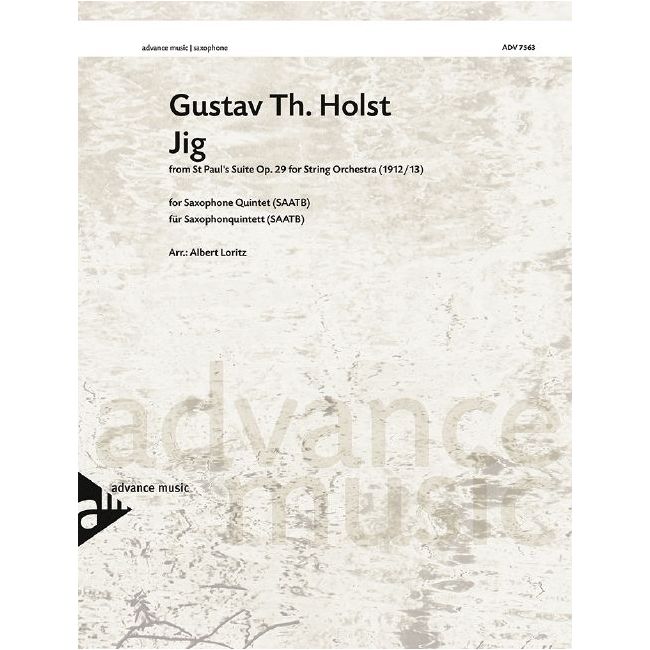| Pages | 40 |
|---|
| Publication Date | 8 June 2012 |
|---|
| Grade of Difficulty | intermediate - advanced |
|---|
| ISBN | 9783892218289 (3892218285) |
|---|
| ISMN | 9790206308888 (M206308888) |
|---|
| UPC | 805095075632 |
|---|
The Jig is the first of the four movements of the “St Paul’s Suite” (op.29, No. 2) written by the British composer Gustav Holst in 1912. Holst composed this work for the string orchestra of the St Paul’s Girls’ School in Hammersmith where he had already been holding the position of Director of Music for seven years. The suite premiered in 1913. This vibrant and vivacious piece immediately captivates the listener. The folcloristic character of the theme and the playful use of the motivic material turn the Jig into a truly “catchy tune”. Even meter and harmony both hold a whole series of charming little surprises. The original version of the composition is characterized by an exquisite setting for string orchestra, which draws the rich and mellow quality of its overall sound especially from those many double stops – mostly played as drones on open strings. Holst’s composition starts from the key of D dorian and finally ends in C mixolydian. The arrangement on hand converts the string setting into a five-part saxophone setting, translating the characteristic features of the original’s folcloristic style as best as possible to the new tone color. By transposing the piece one whole-tone down, the arrangement starts in a register which is very comfortable for saxophones to play in. The piece, however, would end up in a key and/or register in the last part (measure 170 of the original version), which could not be mastered by the saxophone instrumentation chosen for this arrangement. Therefore, the five-bar modulation leading from measure 165 to measure 169 in the original composition has been extended – true to Holst’s style – by two more bars (up to measure 171). This way, the Jig in its arrangement for saxophone quintet now starts in C dorian but finishes in G mixolydian.






